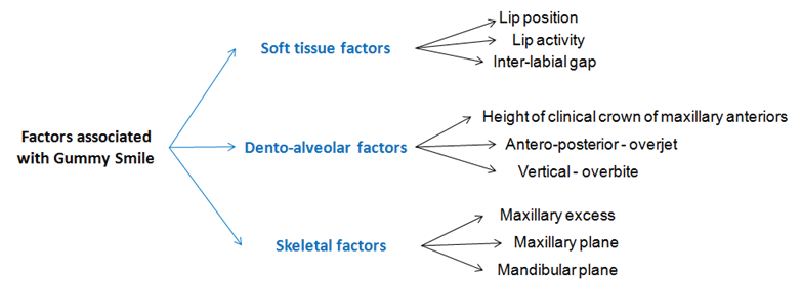
Figure 1: Factors associated with gummy smile


Tasami A Omer1 Adil O Mageet2,3*
1Orthodontic Resident, University of Khartoum, Faculty of Dentistry, Khartoum, Sudan, North Africa*Corresponding author: Mageet AO, Associate Prof and Consultant Orthodontist, Department of Orthodontics, HBM College of Dental Medicine, Mohammed Bin Rashid University, Dubai, UAE, Tel: +971553378730; E-mail: adil.mageet@mbru.ac.ae
The gummy smile is one of the esthetic and psychological problems for adults especially females.
The aim of this study: is to evaluate the relationship between the gummy smile and: Length of the upper lip; height of the clinical crown and inter-labial gap and to help clinicians to indentify the most significant clinical parameters that associated with gummy smile.
Materials and methods: The Sample comprised of 35 females, aged 20-35 years, matched to 35 controls for age sex and race, selected randomly from outpatient clinic at Khartoum dental teaching hospital and from Khartoum University, Faculty of Dentistry. A Sony 10 mega pixel Digital Camera was used for photography and Photoshop software program for the measurements.
Results: Among the three parameters, the height of the clinical crown of maxillary anteriors teeth showed significant result of a p-value 0.04 and the Inter-labial gap showed highly significant result p-value 0.000 when comparing the sample to the controls. The inter-labial gap showed a high correlation to the gummy smile level p-value 0.016.
Conclusion: A proper diagnosis and treatment planning of gummy smile should be aimed to correct these parameters and especially the inter-labia gap to normal value at the end of the treatment either by orthodontic or orthognathic surgery.
Smile parameters; Gummy smile; Nasio-labial length; Inter-labial gap height of clinical crown
In the past the beauty was obtained from the art and cultural behaviors, but recently the esthetic evaluations depend on the analysis of soft tissue profile and patient chief complain that guide orthodontist for proper treatment. The gummy smile is an esthetic problem affecting adults and can have a huge social and psychological impact [1].
Goldstein surveyed the most important esthetic features among the population, and found that 34% choose the eyes, 31% the smile, 10% the hair, 5% the skin color, and 15% the overall facial proportions, so the smile represents an important esthetic value to patients. The operator should carefully evaluate the smile during diagnosis and treatment planning [2].
According to Hulsey, the most attractive smiles are when the upper lip height is at level of marginal gingiva of upper central incisors [3]. When the smile exposes more than 2 mm of the gingiva this is known as gummy smile [4].
According to amount of tooth and gingival display, the smile could be divided into three types:- Low smile display less than 75% of the clinical crown height of the maxillary anterior teeth, Average smile show 75% to 100% of the clinical crown height of the maxillary anterior teeth and High smile which exposed a band of maxillary gingiva, more than that is considered as excessive gingival exposure or gummy smile in which such condition appeared to be undesirable [5,6].
The gummy smile is influenced by gender. Female tend to have more upper gingival exposure during smile and speech than male. This agrees with Peck’s statement [5], that the gummy smile is predominantly a female characteristic.
There are many clinical parameters that affect the gummy smile:This is defined as long, medium and short. The length of the clinical crown of the maxillary central incisor is 11 ± 2 mm when it completely erupted, if the clinical crown is less than 8 mm, it is defined as short [4].
The clinical crown height is negatively correlated to gingival smile line [7,8], the Short clinical crowns may be due to altered passive eruption of gingiva that cover large part of anatomical crown or pathognomic short teeth as explained by Garber and Salama [9].
A vertical midline is opening between the upper and lower lips at rest [10]. Interlabial gap slightly greater in female than males (3.3 mm and 2.6 mm respectively) [11], the inter-labial gap has a significant correlation with gummy smile [4,12].
Is important clinical parameter of gummy smile. The mean value of normal length of the upper lip at rest position is 21.2 mm in females, and 23.4 mm in males [4,13]. Accordingly, there are significant sexual dimorphism with female having shorter upper lip and higher lip line. This may indicate that there is a relationship between length of the upper lip and gummy smile.
The aim of this study is to assess the most significant factors that affect the gummy smile depending on clinical examination, guiding clinicians to proper diagnosis and treatment planning by identifying the relationship between the naso-labial length (NLL) and gummy smile, height of the clinical crown (HCC) and gummy smile and the inter-labial gap (ILG) and gummy smile (Figure 1).

Figure 1: Factors associated with gummy smile
This case control study comprises of 35 female sample collected from the outpatient clinic at Khartoum Dental Teaching Hospital and from Khartoum University, Faculty of Dentistry, who had gingival smile of 2 mm or more at maximum smile with age group between 20-35 years.
The controls were randomly selected from same clinics. The cases and the control sign a consent form designed by Khartoum University.
Subjects were excluded from the study population having orthodontic treatment, crown in anterior teeth, extraction, trauma or any maxillofacial surgery.
Two type of close view photos were taken from all patients, one at rest to measure the length of upper lip and inter-labial gap and another one at maximum smile position to measure the amount of gingival display and the height of clinical crown that achieved by each subjects.
The smile is repeated twice to achieve the same lip position or until see the wrinkle around the eyes which is indicate the maximum smile. Then all photos scanned to a computer. Corel draw version 11, 2004 USA program was used for measurements as follow: The amount of gingival display measured as vertical line draw from the center of lower border of the upper lip perpendicular to the line pass through gingival margin in millimeters.
The height of the clinical crown measured as vertical line from highest point at cervical area on maxillary right central incisor to incisal edge in millimeters (Figure 2); The naso-labial length measured as vertical line along the facial midline from the soft tissue sub-nasale (point at junction between base of the nose and the tip of the philtrum) to the inferior border of the upper lip in millimeters when the patient at rest position and the lips relaxed (Figure 3); The inter-labial gap recorded as vertical line between lower border of the upper lip and upper border of the lower lip at central area in millimeters when lips at rest (Figure 4).
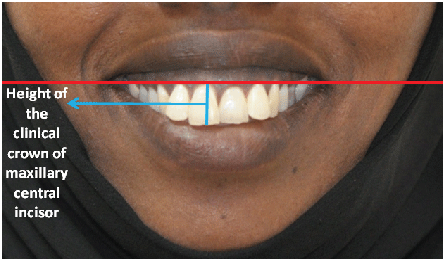
Figure 2: Height of the clinical crown of maxillary central incisor
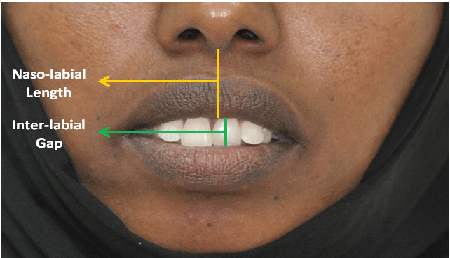
Figure 3: The parameters; Naso-labial Length and Inter-labial Gap
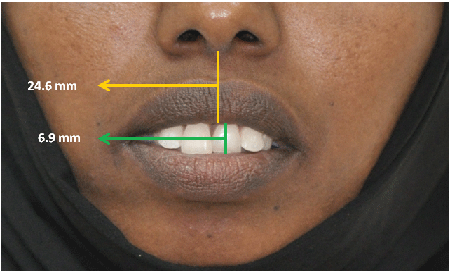
Figure 4: Rest position
A standard statistical descriptive technique was used to summarize sample information for both case and control groups.All data were entered to excel sheet, then SPSS program version 17.0 was used to facilitate the computation. The result obtained by Logistic regression test to assess the relationship between mean of each variable (the naso-labial length, Inter-labial gap, and Height of the clinical crown of maxillary anteriors) to amount of gingival display and show the more significant predictors to gummy smile.
The mean, standard deviation for all variables in the three groups were measured and the p-value was determined (Table 1).
Variables |
N |
Levene's Test for the variances |
Mean (Sd) |
P-value |
|||
|
Sig. |
Variances |
|||||
HCC |
Sample |
35 |
2.128 |
0.005 |
Not equal |
9.79 (1.24) |
0.0474 |
Control |
35 |
10.30 (0.85) |
|||||
NLL |
Sample |
35 |
1.540 |
0.210 |
equal |
24.15 (4.12) |
0.3329 |
Control |
35 |
25.03 (3.32) |
|||||
ILG |
Sample |
35 |
1.328 |
0.245 |
equal |
6.22 (2.27) |
<0.0001 |
Control |
35 |
3.34 (1.97) |
|||||
Table 1: Comparison of clinical parameters between cases and control
Student’s t-test used to evaluate the difference between the mean of each variable in the sample and control groups, then shows the most significant variable in GSL sample group in tables 2 and 3 respectively.
Variables |
N |
Pearson correlation |
p-value |
Significance |
HCC |
35 |
-0.19 |
0.1190 |
NS |
NLL |
35 |
-0.04 |
0.7365 |
NS |
ILG |
35 |
0.63 |
<0.0001 |
Significant*** |
Table 2: Correlation between length of gingival exposure and clinical parameters
Table 1 shows the mean of each variable in the sample (N=35) and the control (N=35), there are slight difference in mean of the naso-labial length (NLL) and height of clinical crown (HCC) while the inter-labial gap show significant difference in mean between (6.22) in GSL group and (3.34) in control group with a high significant result, p-value (<0.001), where only 22.9% show lip separation more than 4mm at rest position in control (8 subjects with 2 persons with zero lip separation) and 88.6% in GSL group with only 4 cases below 4 mm.
A correlation coefficient had been used to identify the correlation between length of gingival exposure and clinical parameters of smile. A significant correlation was found between inter-labial gap (ILG) results in strong correlation (0.63) with p-value of (<0.0001). The other clinical parameter showed no significant.
Table 3, shows a significant correlation was found between gingival smile measurement and inter-labial gap (ILG) results in a significant correlation (0.4) with p-value of (<0.016). The other clinical parameter showed no significant.
Variables |
N |
Pearson correlation |
p-value |
Significance |
NLL |
35 |
0.09 |
0.600 |
NS |
HCC |
35 |
0.10 |
0.572 |
NS |
ILG |
35 |
0.40 |
0.0161 |
Significant |
Table 3: Correlation between gingival Smile measurement and clinical parameters
Gingival smile can be divided into various categories according to etiological factors; soft tissue factors (lip position, lip activity and the interlabial gap); dento-alveolar factors (height of clinical crown of maxillary teeth, over jet and over bite; skeletal factors (maxillary excess, maxillary and mandibular planes). A short upper lip is also a frequent cause of gingival smile. Muscular gingival smile is caused by over activity of the upper lip levator muscle. Gingival smiles can be caused by a combination of these factors [14].
One of the most important unpleasant appearances is excessive exposure of maxillary gingivae more than 2 mm during maximum smile [15] (Figure 5). It affects both genders, but females complain more concerned about the unpleasant appearance. Thirty one percent of the population choose smile as important esthetic value [4,16].
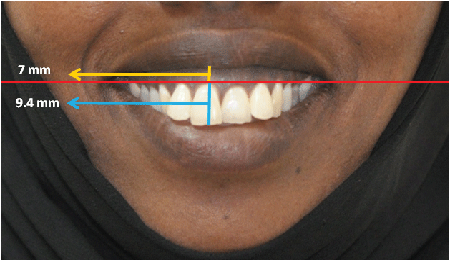
Figure 5: Maximum smile
Janzen [17] found an association between short upper lip and gingival display [16]. The gummy smile associated with short upper lip [17]. There is an association between higher GSL in female and short upper lip [18]. Another researcher found no difference in upper lip length and gummy smile [5]. There is an association between higher GSL and short upper lip [19]. Our present study found no significant association between the Naso-labial length and gummy smile, the most significant variable in GSL group, demonstrated weak correlation between height of clinical crown (0.098) and naso-labial length to gingival exposure (0.092).
An early study stated that the position of anterior teeth is important factor in relationship of lips to each other and to the surrounding structures and fount that the clinical crown height was slightly shorter for GSL group, this difference was not statically significant [5,16]. Another scholar found an association between short clinical crown and gummy smile [20], short clinical crown associated with GSL is observed clinically [21]. This present study found a significant difference in the HCC between the sample and the control which support that the height of clinical crown is a significant factor in determining gummy smile.
A review article concluded that there is a relationship between gummy smile and inter-labial gap [16] another researchers found the inter-labial gap more than 5.5 times in GSL group [1,4].
This recent study found the inter-labial gap to have a strong correlation (0.40) and significant p-value of (0.02) to gingival exposure. The interlabial gap shown significant difference in mean between (6.22) in GSL group and (3.34) in control group with a high significant result, p-value (<0.0001), where only 22.9% show lip separation more than 4mm at rest position in control (8 subjects with 2 persons with zero lip separation) and 88.6% in GSL group with only 4 cases below 4 mm.
The height of the clinical crown of the maxillary anteriors and the inter-labial gap are stronger factors in determining gummy smile than the length of the upper lip. There are many possible treatments options for gummy smile, like intrusion of upper anteriors, orthognathic surgery, Botulinum toxin A or other alternative procedure.
The patients were informed of the purposes and potential benefits, risks and complications. The patients were given an opportunity to refuse inclusion in the study. A consent form is signed by all.
Download Provisional PDF Here
Article Type: Research Article
Citation: Omer TA, Mageet AO (2016) Clinical Parameters of the Gummy Smile among Sudanese Female Sample. Int J Dent Oral Health 3(1): doi http://dx.doi.org/10.16966/2378-7090.225
Copyright: © 2016 Omer TA, et al. This is an open-access article distributed under the terms of the Creative Commons Attribution License, which permits unrestricted use, distribution, and reproduction in any medium, provided the original author and source are credited.
Publication history:
All Sci Forschen Journals are Open Access